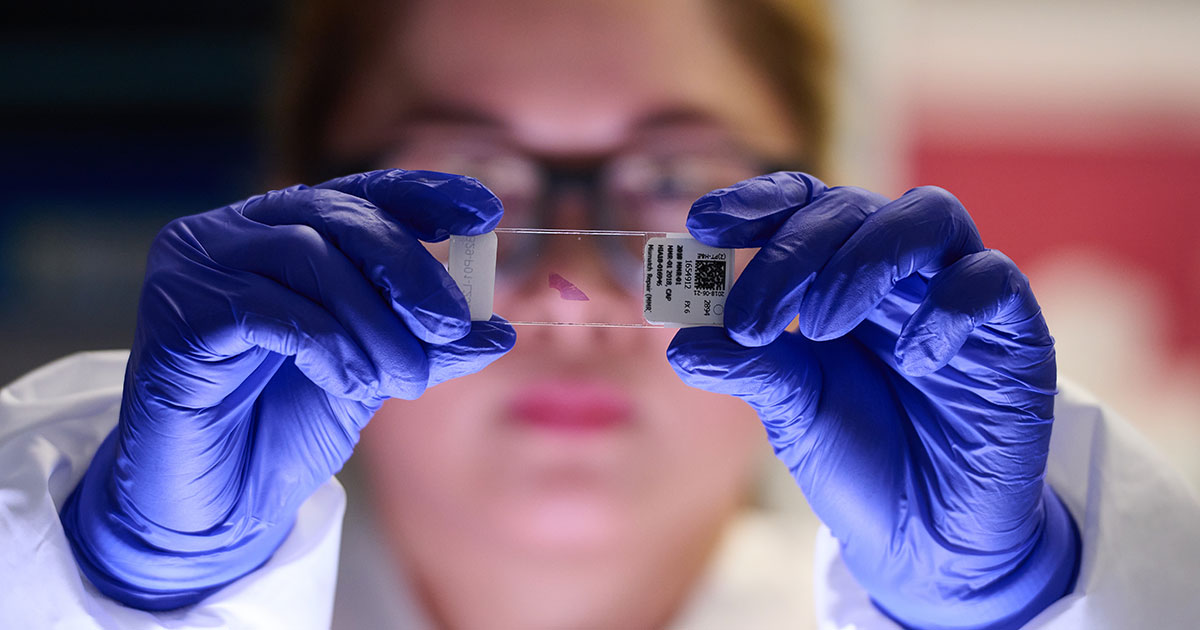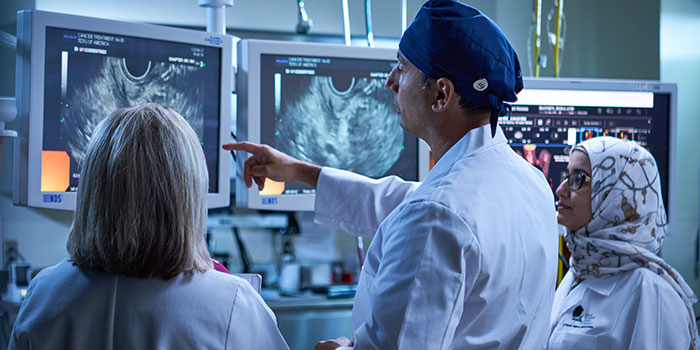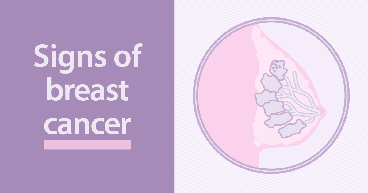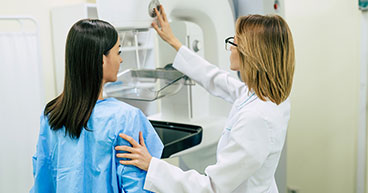
Stage 0 breast cancer is the earliest form of breast cancer—found in the milk ducts of the breasts, meaning it hasn’t spread to surrounding tissue.
While stage 0 breast cancer itself may not need treatment, doctors currently have no way of knowing which of these cancers are likely to grow or spread and which could simply be monitored. Over time, many stage 0 breast cancers end up growing or spreading, ultimately getting relabeled as stage 1 or higher.
Until they know more, doctors tend to treat stage 0 breast cancers proactively to prevent future spread in the breast, to nearby lymph nodes or to other organs. That’s what makes detecting these cancers early so important—and the fact that most of them don’t cause symptoms, or warning signs, may be concerning. In fact, the majority of stage 0 breast cancers are found by accident, such as during a routine mammogram or screening.
“Stage 0 breast cancer is not a reason to hit the panic button, but it is a diagnosis that is serious enough to warrant concern,” says Eugene Ahn, MD, Medical Oncologist at City of Hope Chicago.
In this article, we’ll explore:
- What is stage 0 breast cancer?
- The types of stage 0 breast cancer
- What is Paget’s disease of the breast?
- How is stage 0 breast cancer diagnosed?
- Stage 0 breast cancer treatment
- Managing the stress of a stage 0 breast cancer diagnosis
If you’ve been diagnosed with breast cancer and are interested in a second opinion on your diagnosis and treatment plan, call us or chat online with a member of our team.
What is stage 0 breast cancer?
Stage 0 breast cancers may often be called pre-cancers or pre-invasive cancers, which are a collection of abnormal cells in the breast that have some characteristics of cancer but haven’t yet spread to other tissues or organs.
The types of stage 0 breast cancer
The breasts are made up of:
- Milk-producing glands, called lobules
- Ducts that carry milk to the nipple
- Tissue that surrounds the lobules and ducts and gives the breasts their shape
The two types of stage 0 breast cancer are:
In situ means the cancer is contained to either the lobules (in the case of lobular carcinoma) or the ducts (in the case of ductal carcinoma).
Lobular carcinoma in situ
This type of cancer develops in the lobules and typically affects women who are 40 to 50 years old, usually before they reach menopause. Although lobular carcinoma doesn’t tend to spread, it does increase the risk for other types of breast cancer. That’s why it’s important to monitor it.
Women (and, in very rare cases, men) may also develop a condition called lobular neoplasia, characterized by an increase in the number of cells in the lobules and a change in their appearance and behavior. Lobular neoplasia isn’t cancer, but those diagnosed with it have a slightly higher risk than others of developing breast cancer later.
Ductal carcinoma in situ (DCIS)
This type of cancer develops in the milk ducts, makes up roughly 1 in 5 new breast cancer cases each year and is, by far, the most common of the two forms of stage 0 breast cancer.
If it isn’t treated, DCIS may become invasive. In fact, it does in up to 50 percent of all cases.
What is Paget’s disease of the breast?
While not a type of stage 0 breast cancer, Paget’s disease of the breast is a rare form of cancer that may act as a cousin of DCIS. The cancer forms in the skin of the nipple and, typically, the dark circle of skin around it, called the areola.
Most Paget’s disease of the breast patients also have at least one tumor inside the same breast, which is either DCIS or invasive breast cancer. Doctors believe Paget’s disease is caused by cancer cells from the tumor inside the breast traveling through the ducts to the nipple and areola, which is why the disease and either DCIS or invasive breast cancer often occur together in the same breast.
Symptoms and treatment for Paget’s disease
The symptoms of Paget’s disease may be confused with less serious conditions, such as skin infections or eczema. These symptoms may include:
- A nipple that looks flattened or inverted, meaning it caves inward
- A nipple that looks flaky, crusty or red
- Itching or tingling in the nipple or areola
- Yellowish or bloody discharge from the nipple
As many as half of people with Paget’s disease also have a breast lump that can be felt during a clinical exam. For this reason, doctors have historically opted to surgically remove the breast—with or without removing the lymph nodes, too—to treat the condition.
Today, however, studies have shown that breast-conserving surgery that removes the nipple and areola followed by radiation therapy may be a safe treatment option for people with Paget’s disease of the breast who don’t have a lump that can be felt or a mammogram that shows a tumor.

How is stage 0 breast cancer diagnosed?
Most people discover they have stage 0 breast cancer through a regular mammogram screening. Doctors look at three factors to determine the stage of breast cancer: the tumor’s size, whether cancer has spread to the lymph nodes and how many it’s affected, and whether cancer has spread to other parts of the body.
The four stages of breast cancer after stage 0 are listed below.
Stage 1 breast cancer: The tumors are small and haven’t spread much, if at all.
Stage 2 breast cancer: The tumors are slightly larger and have spread to surrounding breast tissues but not to nearby organs. They may have spread to a small number of lymph nodes or a small section of nearby tissue.
Stage 3 breast cancer: The tumors are larger and may have spread to wider areas of breast tissue or several nearby lymph nodes, but not other organs.
Stage 4 breast cancer: This stage is also known as metastatic breast cancer because tumors have spread to other organs.
Stage 0 breast cancer treatment
Whether your doctor recommends treatment for stage 0 breast cancer depends on several factors, including your age, family history and the characteristics of your specific cancer.
Most commonly, doctors recommend surgery to remove the cancerous cells (either a lumpectomy to remove part of the breast or a mastectomy to remove one or both breasts), followed by radiation therapy. Hormone therapy, such tamoxifen or an aromatase inhibitor, after surgery may also be an option if the cancer is hormone-receptor positive.
Oncologists also typically recommend more regular follow-up screenings for women with a history of stage 0 breast cancer.
So far, researchers haven’t been able to predict which cases of DCIS will become invasive and spread, which is why almost all women with DCIS undergo some form of treatment, including surgery or radiation therapy. That’s led to some controversy in recent years among women who have received treatment and experienced unwanted side effects. These women say their cancer should have been monitored (sometimes referred to as “watchful waiting”) instead and only treated if the cancer spread.
Most doctors agree that treatment for DCIS patients should be personalized—that a small tumor in the ducts of an older patient isn’t the same thing as a large tumor in the ducts of a younger patient. Researchers have also made some headway in identifying certain tumor suppressors as markers of DCIS cases that will likely become aggressive.
Still, it’s important to ask your doctor questions about your diagnosis and recommended treatment plan and to get a second opinion.
“You should seek multiple medical opinions as there are many ways to approach stage 0 breast cancer, and individualization and personalization of treatment is definitely a major theme surrounding this diagnosis,” Dr. Ahn says.
Managing the stress of a stage 0 breast cancer diagnosis
It’s important to note that the five-year survival rate for a patient diagnosed at stage 0 is 99 percent, according to the American Cancer Society. Breast cancer that’s found early, when it’s small and hasn’t spread, is often easier to treat—and the best way to detect it early is through routine screenings. Still, receiving a stage 0 breast cancer diagnosis may cause stress and anxiety. Talk with your care team about how you can help manage stress related to a stage 0 breast cancer diagnosis. They may recommend relaxation techniques such as meditation, seeing a counselor or receiving other supportive care services for mental health.
If you believe you may be experiencing symptoms of breast cancer and want to schedule an appointment for diagnostic testing, or if you’re interested in a second opinion for breast cancer, call us or chat online with a member of our team.




